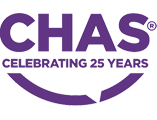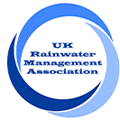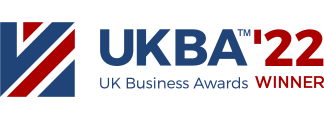A Guide to Greywater Recycling
31/08/2023
Many people ask what greywater recycling is. Greywater recycling is the process of collecting water runoff from showers, hand-wash basins, and bathtubs for recycling. Instead of the greywater entering the drainage network, the greywater runoff from these appliances is transported to an onsite greywater recycling system which processes and treats the water runoff to be used as a non-potable water supply across the building. Unlike black water, greywater is lightly contaminated wastewater that can be easily reused as a sustainable water supply.
Our guide to Greywater Recycling will help you to understand more about the growing technology of greywater recycling, including why the technology is needed, how the systems work, and what ongoing maintenance is required to help the system operate over a prolonged period.
Greywater Recycling Systems are rising in popularity around the world as the impacts of water scarcity are becoming increasingly clear. In the UK, water shortages are becoming such a problem in areas of the Southeast that water companies are continually implementing hosepipe bans to prevent drinking water shortages in dry spells.
High demand for drinking water supplies is not the only issue facing the UK water industry. Existing sewer infrastructure, much of which was installed and constructed in the Victorian Times, is under significant pressure from the increases in the volume of wastewater and stormwater entering the sewer network for treatment.
In the UK, the sewer system is made up of thousands of miles of combined sewers. Essentially, combined sewers collect both wastewater from toilets and kitchens, as well as perfectly clean rainwater which is all transported to a sewage treatment works.
Currently, when a sewer cannot cope with the volume of water during heavy rainfall, a large valve opens to release the excess wastewater into the rivers and seas. This water is untreated and is polluting our rivers and beaches. The process is called a Combined Sewer Overflow (or CSO for short). CSOs occurred over 300,000 times across the UK last year which highlights the need for localised water management.
Greywater Recycling is a way of both reducing demand for potable water supplies and reducing the volume of wastewater entering the sewer networks. Whilst greywater recycling technologies are established across Europe, greywater recycling is a relatively new technology in the UK. In fact, many people often mix the terminology of greywater recycling and rainwater harvesting when the two technologies are entirely different.

Greywater recycling is achieved through the following steps which ensure high levels of water quality.
Debris filter – greywater from hand wash basins, showers, and bathtubs is pre-filtered through a mesh filter to remove contaminants. Contaminants and debris collect on the surface of the mesh which filters the greywater down to 1000 microns (the equivalent to 1 millimetre). Contaminants collected on the mesh surface are regularly flushed into the drain using a high-pressure backwash nozzle. The automatic backwashing nozzle reduces maintenance requirements for the end user.
Treatment Tank - The treatment tank is where the biological treatment process takes place to create a high-quality supply of clean water. Greywater in the treatment tank is aerated via a pipe diffuser to create a positive environment for the treatment process to take place. Growth bodies are also located in the tank to increase the surface area where biodegradation takes place.
Ultrafiltration – Greywater is then processed through membrane filters which house microscopic pores to prevent bacteria and viruses from passing through. Membrane filters are cleaned via a backwashing system which passes air bubbles over the filter to maximise water flow rates, remove excess biofilm, and reduce maintenance requirements.
Greywater Recycling is most effective in large-scale buildings which have a high daily water demand. Building types such as Leisure centres, student accommodation buildings, commercial offices, and hotels are all ideal for greywater recycling as they have many showers and handwash basins where greywater can be collected from and multiple appliances where a non-potable water demand can be used.
Large-scale commercial buildings typically only use 25% of the total incoming mains water supply for drinking and sanitation purposes. This means the remaining 75% of water consumption within these building types is formed of non-potable usage and can be very easily offset through a greywater recycling system.
There is a misconception that greywater recycling systems are difficult and costly to maintain when this is simply not the case. The Stormsaver greywater recycling system is complete with automatic backwashing of the membrane filtration units, unlike other systems where these will need to be manually replaced. The backwash system also includes chemical dosing to remove the buildup of naturally occurring biofilm from the pipework in the system. Systems that do not use chemical additives will need manual cleaning with chemicals, otherwise, they will suffer from blockages after a short period. As only a small amount of chemical additives are used, the replacement can be completed during our bi-annual service visits.
The Stormsaver system also uses a high-pressure jet wash to prevent excess collection of debris on the surface of the mesh. Unlike other systems, the water supply for this jet wash is supplied directly from the booster pumps meaning that the jetwash pressure is sufficient enough to remove debris. Other systems suffer from a low-pressure supply to the jetwash often resulting in blockages that need to be manually removed.
Want to learn more about greywater recycling for your next project? We are on hand to help. Visit our greywater recycling system page here or contact our team today.

My role as a Water Reuse Specialist means I get to keep up to date with all things water conservation. My favourite water saving tip is to turn taps off when brushing your teeth! I think rainwater harvesting and the water reuse industry is exciting, and I love sharing updates with our customers. View Matt’s Stormsaver profile here.
Terms & Privacy Policy Cookie Policy Site Map
Copyright © 2024 Stormsaver Ltd. All Rights Reserved.





